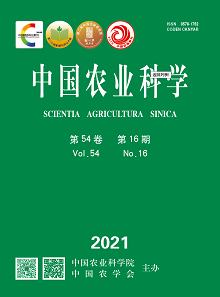【Objective】The objective of this study was to determine the energy and protein requirements of Alpine Merino growing sheep, which could provide basic data and theoretical support for the formulation of feeding standards. 【Method】 It was selected that forty eight 14-month old Alpine Merino growing male sheep (n = 24, an initial body weight of 42.96 ± 3.13 kg) and female sheep (n = 24, an initial body weight of 32.85 ± 3.21 kg). The experiment lasted for 40 days, including 5-day transition period, 10-day pre-trial period and 25-day formal period. In the transition period, oat hay was fed in the morning and evening every day, and a small amount of total mixed pellet feed was fed at noon to realize the transition from forage to pellet feed; in the pre-trial period, the sheep were free to eat the whole mixed pellet feed in a single pen, and the feed intake was recorded; in the formal period, the sheep were grouped according to the feed intake of the pre-trial period feeding, growing male and female sheep were divided into 4 groups, fed with 4 levels of free feeding (AL group), 80% (IR80 group), 60% (IR60 group) and 40% (IR40 group) with 6 replicates in each group and 1 sheep in each replicate. In the last five days of the formal period, the digestion and metabolism trials were carried out continuously with the method of total collection of feces and urine. During this period, the feeds, feces and urine of each sheep were accurately recorded and collected. In the last two days, the respiratory calorimetry was carried out by the indirect calorimetry of respiratory mask to determine the growth performance, energy utilization and nitrogen balance indexes. The energy and protein requirements of Alpine Merino growing sheep were obtained by regression analysis. 【Result】 There was no significant difference in the initial weight between the growing male and female sheep (P>0.05). With the decrease of feed intake level, the final weight, average daily gain, dry matter intake, gross energy intake, fecal energy, digestible energy, metabolic energy, retained energy, nitrogen intake, fecal nitrogen, digestible nitrogen, retained nitrogen, retained nitrogen/nitrogen intake and retained nitrogen/digestible nitrogen decreased significantly, that is, AL>IR80>IR60>IR40 (P<0.05). However, feed intake level had significant effect on gas emission of Alpine Merino growing female sheep (P<0.05). Oxygen consumption and carbon dioxide production of IR40 group were significantly lower than those of the other three groups (P<0.05). With the decrease of feed intake level, the total energy digestibility, total energy metabolic rate and nitrogen apparent digestibility of male sheep increased significantly (P<0.05). The maintenance requirements of NE, ME, the efficiencies of ME utilisation for maintenance, every 1 g·kg -1BW0.75·d-1 body weight gain, DE, ME and NE of Alpine Merino growing male and female sheep were 227, 213 kJ·kg-1BW0.75·d-1, 283, 279 kJ·kg-1BW0.75·d-1, 0.80, 0.76, 760, 830 kJ·kg-1BW0.75·d-1, 570, 750 kJ·kg-1BW0.75·d-1, and 290, 370 kJ·kg-1BW0.75·d-1, respectively. Every 1 g·kg-1BW0.75·d-1 body weight gain, the maintenance requirements of net nitrogen, NPm, CPI and DCP of Alpine Merino growing male and female sheep were 220.8, 190.4 mg·kg-1BW0.75·d-1, 1.38, 1.19 g·kg-1BW0.75·d-1, 7.75, 6.55 g·kg-1BW0.75·d-1, 6.02, and 4.38 g·kg-1BW0.75·d-1, respectively. 【Conclusion】The results of this study showed that the energy and protein requirements of Alpine Merino sheep were different from the established sheep recommended values, which might be related to factors such as breed, physiological condition, age and environment. In addition, the model established in this study could be used to estimate the energy and protein requirements of Alpine Merino sheep.









